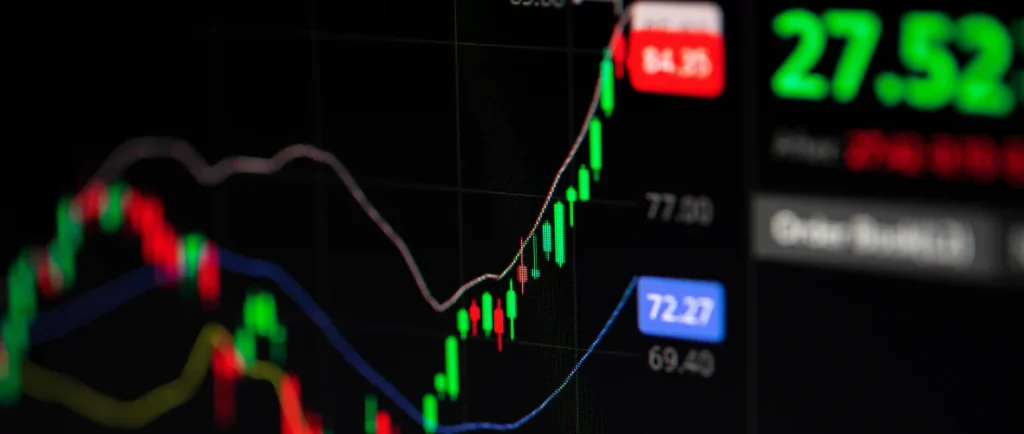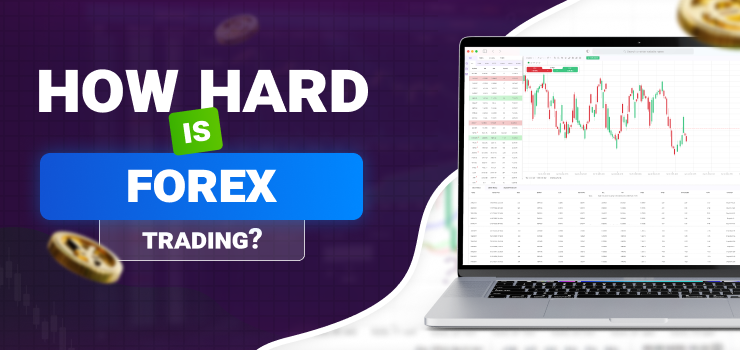The foreign exchange (Forex) market is the largest and most liquid financial market in the world. As such, it attracts many new individual traders hoping to profit from fluctuations in currency exchange rates.
However, forex trading also has a reputation for being highly complex and risky. Even experienced traders occasionally suffer substantial losses. This begs the question: how difficult is it to succeed in the Forex market?
In this in-depth guide, we will explore the true learning curve and difficulties involved in forex trading from multiple angles. By the end, you’ll have a clear understanding of the specific challenges, what it takes to overcome them, and whether Forex is a good fit based on your experience level and preferences.
The Basics of Forex Trading Are Not That Complex
Many people are initially intimidated by the idea of trading currencies due to the technical nature of the Forex market. However, becoming familiar with the core concepts is not rocket science.
The fundamental components are straightforward:
Currency pairs – These are the two currencies traded against each other, represented as a symbol like EUR/USD or GBP/JPY.
Exchange rates – How much is one currency worth in units of another currency? Rates fluctuate based on economic factors and trader behavior.
Pips – The minimum price change in any pair, usually the fourth decimal place for majors like EUR/USD.
Going long vs short – Buying or selling a currency hoping its value will rise or fall relative to the counter currency.
Margin trading – Using leverage provided by brokers to control large positions with much less capital.
It doesn’t take extensive study to grasp these core building blocks. With a few hours of reading basic tutorials online, any novice could understand the terminology. Things become clearer after practicing with a demo account.
So in terms of concepts alone, the surface-level complexity of Forex is quite low. But this is only scratching the surface – true challenges lie much deeper.
Mastering Technical and Fundamental Analysis is Challenging
While the core mechanics are straightforward, developing robust analytical skills to profit from currency movements consistently is exceptionally difficult. This is where the learning curve turns steep and requires a serious commitment to master.
Traders must juggle two main types of analysis:
Technical Analysis
Studying historical price data using indicators, patterns, trendlines, and other tools to infer where currencies may go next based on recurring market psychology. Popular technical techniques include:
- Chart patterns like head & shoulders, triangles, wedges, etc.
- Moving averages like 10, 20, 50, and 200 pperiodsEMA/SMA.
- Oscillators like RSI, MACD, and Stochastics.
- Price action reading focusing on support/resistance zones.
Technical analysis looks deceptively simple but taking subtle cues from naked charts is an art that may take a decade to perfect. It requires deep experience to spot subtle clues.
Fundamental Analysis
Monitoring economic reports, central bank activity, geopolitical events, and other real-world factors impacting currency valuation fundamentals over the long run. Key data points include:
- Interest rates – Higher rates strengthen currencies.
- Inflation – Rising prices hurt domestic demand for a currency.
- GDP growth – Strong economies favor their currencies.
- Balance of payments – Trade balances impact exchange rates.
- Political risk – instability weakens currencies.
Fundamental factors are challenging to predict and their effects are subjective. Having an informational advantage is difficult.
For most traders, achieving mastery in technical and fundamental domains usually takes 5-10 years of dedicated study, practice, and experience managing real money accounts through various markets. It is not an easy process by any measure.
Dealing With High Volatility and Lack of Predictability is Stressful

One major hurdle unique to Forex is the market’s enormous liquidity and correspondingly high daily volatility compared to other assets. Popular currency pairs may see swinging price movements encompassing 100+ pips on a routine basis.
This makes predicting short-term price action extremely difficult. Even strong technical or fundamental analyses only provide general guidance rather than certainty. Markets do not always behave rationally or as forecasted.
The unpredictable swings put traders under more pressure to continually review their positions. To endure volatility, careful risk management and skillful positioning are necessary. When using stop-losses to reduce losses, one must act quickly and decisively under duress.
Unexpected news can cause irrational currency spikes or crashes, surprising traders. Extended periods of concentration produce uncertainty rather than clear-cut tendencies. Even with profitable trades, there is never space for complacency due to massive intraday reversals.
It is psychologically demanding to constantly question and change. The self-control, concentration, and composed decision-making required to counteract the volatility present in the Forex market take years to develop. Along the journey, many give in to mental suffering.
Overcoming Psychological Bias and Controlling Emotions is Vital
Alongside market irregularities, the biggest obstacle for traders is mastering their psychology. Overcoming natural human biases and emotions that push decision-making in the wrong direction is a lifelong challenge:
- Fear of missing out – Chasing extended moves due to FOMO often results in buying tops and selling bottoms.
- Loss aversion – Clinging too long to losing positions hoping for a rebound rather than cutting losses quickly.
- Confirmation bias – Seeking information confirming priors and ignoring contrary evidence.
- Anchoring – Using reference points like entry prices that skew subsequent decisions.
- Recency bias – Assuming recent trends will perpetually continue rather than respecting reversals.
- Greed – Holding winning trades too long looking for maximum profits rather than taking partial profits.
- Impatience – Jittery behavior like order stacking due to intolerance of drawdowns/consolidations.
Correcting irrational mental flaws takes continuous introspection, keeping detailed trading journals, accepting accountability for mistakes, and developing disciplined routines through the experience of consequences. It’s a lifelong battle that often proves too much for many traders.
Managing Money Effectively in Live Accounts Requires Further Skills
Fully capitalizing on analysis abilities means developing additional expertise in risk, money, and portfolio management practices:
- Position sizing – Allocating correct position sizes based on volatility, capital, and risk tolerance to withstand drawdowns.
- Risk management – Using defined risk parameters like stop losses, trailing stops, position size limits per trade, and maximum daily loss levels.
- Bankroll management – Money growth strategies keep risk low during learning curves and preserve capital for longevity.
- Diversification – Trading multiple currency pairs/strategies to offset inevitable failures, reducing dependency on any single view or market situation.
- Leverage control – Judicious use of margin depending on volatility and skill level to avoid being caught in irrational moves.
- Downturn navigation – Accepting drawdowns as inevitable over time but avoiding panic reactions that turn small losses into much larger ones through poor decisions.
Real experience requires risking actual capital in live forex accounts over extended periods in diverse markets, exposing flaws to learn from consequences. It can take years of mistakes to develop sound practices.
Keeping Order During Market Cycles: Assessments and Decisions
Beyond technical/fundamental analysis and psychology/money management, achieving long-term success in volatile markets also demands supreme discipline through diverse market conditions and lengthy drawdown periods where strategies may struggle to work.
Periodically facing difficult scenarios tests willpower including:
- Consolidating sideways markets where opportunities are sparse and patience crucial.
- Sharp trendless choppiness favoring short-term, highly active trading difficult for many.
- Major geopolitical/macroeconomic crises induce short-term chaos as trend rules break.
- Drawdowns exceeding 10-20% of the account where persisting with strategy requires resolve.
- Sustained periods where top-tier analysis fails, requiring adaption of techniques.
- Fatigue from the grind of continuous study/learning curve over months/years.
True excellence emerges from weathering inevitable rough patches without panic or abandonment of a tested approach, continuing to learn amid failures. This discipline proves extremely challenging for most.
Conclusion | How Hard Is Forex Trading?
In conclusion, even if the fundamentals of forex trading are very easy to grasp, putting methods into practice and making consistent gains over the long run are quite hard. The development of skills such as technical and fundamental analysis, handling high market volatility, overcoming psychological biases, risk management, and discipline through a variety of cycles takes most traders years of focused practice and experience.
Forex trading requires great skill, mental toughness, and an unwavering will to constantly advance, adapt, and gain an advantage over other market traders for those who desire to become professional traders. By no means is it a get-rich-quick business. But for traders who are prepared to dedicate themselves entirely to the drawn-out learning process and who handle their money well, it is undoubtedly possible for those who excel to make a living in this enormous market. Copy trading also helps lower the barrier for beginners and is an excellent choice to start with.



